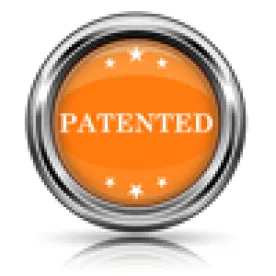Takeaway: In the case where neither submits any statement as to the level of ordinary skill in the art, the Board may determine the obviousness issues guided by the evidence of the level of ordinary skill in the art presented by the references themselves.
In its Final Written Decision, the Board concluded that Petitioner had shown that claims 1-4 of the ‘689 patent are unpatentable. The Board concluded that the challenges to the other claims in question – namely, claims 5, 6, and 9 – were moot because these claims had been canceled. No oral hearing was conducted.
Petitioner had sought inter partes review of claims 1-6 and 9 of the ‘689 patent. Claims 5, 6, and 9 were ultimately canceled by way of a reexamination proceeding, leaving only claims 1-4 as the challenged claims in the instant proceeding. Claims 1-4 and 7-8 were not at issue in the reexamination proceeding.
As characterized by the Board, the ‘689 patent “describes a way to reduce power consumption and conserve the battery life of an electronic device by stopping the device’s clock signal” in accordance with which “[a] clock signal is a regularly timed pulse used to synchronize the operations of a microprocessor.” The asserted grounds were as follows: (1) anticipation of claims 1-6 by AMD under 35 U.S.C. § 102; (2) anticipation of claims 1-6 and 9 by Maejima under 35 U.S.C. § 102; and obviousness of claims 1-6 and 9 under 35 U.S.C. § 103 in view of AMD and Maejima.
Because neither party made any statement as to the level of ordinary skill in the art, the Board, operating under Okajima v. Bourdeau, 261 F.3d 1350, 1355 (Fed. Cir. 2001), “[determined] the obviousness issues guided by the evidence of the level of ordinary skill in the art presented by the references themselves.” In particular, the Board considered Maejima to be “representative of the level of ordinary skill in the art at the time of the invention.”
There were no disputes as to claim construction. Accordingly, the Board adopted the claim constructions that Petitioner had provided for several terms (including for means-plus-function limitations).
The Board disagreed with Petitioner’s assertion that claims 1-4 are anticipated under 35 U.S.C. § 102(b) by Maejima. Among other things, the Board took issue with Petitioner’s argument that “if the Board does not find Maejima anticipates claims 1-4, the result of this case will be inconsistent with the Reexam, which found similar limitations of claim 5 were met by Maejima.” As found by the Board, “the relationship between the means for verifying and the means for receiving is different in this case” and “[because] Petitioner took a position inconsistent with the position in the Reexam, Petitioner can and has received a different result than the Reexam.”
On the other hand, the Board was persuaded that Petitioner had shown by a preponderance of the evidence that claims 1-4 are unpatentable both under 35 U.S.C. § 102 over AMD and under 35 U.S.C. § 103 over AMD and Maejima.
Nissan North America, Inc. v. Norman IP Holdings, LLC, IPR2014-00563
Paper 38: Final Written Decision
Dated: August 26, 2015
Patent 5,502,689
Before: Bryan F. Moore, Hyun J. Jung, and Frances L. Ippolito
Written by: Moore



 />i
/>i

